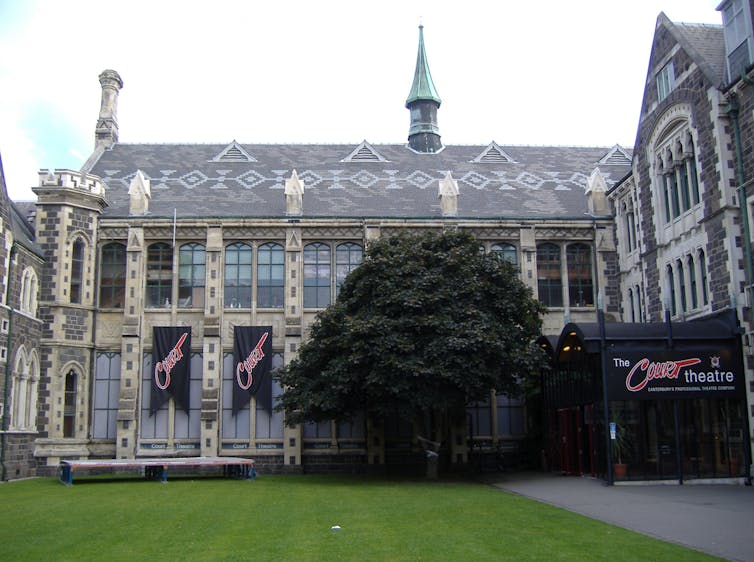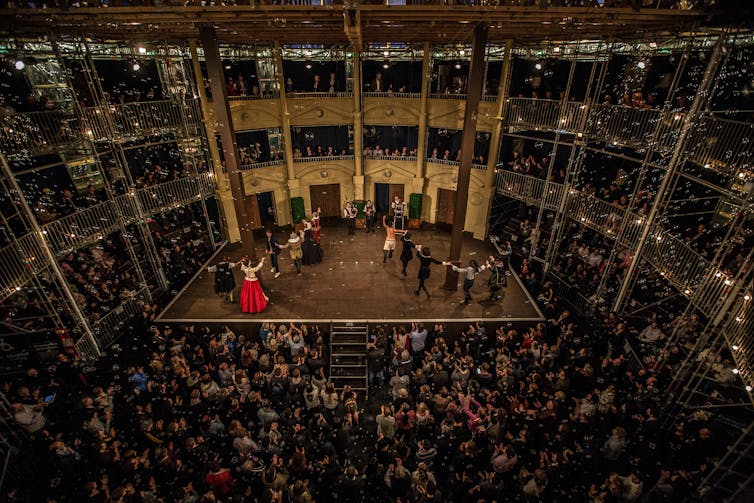Source: The Conversation (Au and NZ) – By Jonathan Baker, Senior lecturer in business strategy, Auckland University of Technology
The past 12 months presented unprecedented challenges for the performing arts as the pandemic curtailed many live performances.
Some organisations relied on pushing digital content to remain in the public eye, but this was next-to-impossible to monetise.
Now, as the COVID vaccines roll out and the sector heads towards a reset, it’s worth applying some fresh thinking to the arts landscape of the future.
Some have asked for more sustainable funding, others for more funding. But the central question is: can we get better value-for-money from the spend through central and local government?
Read more: A year on from New Zealand’s big lockdown the ‘team of 5 million’ needs a new story
The answer is “yes” — if we don’t duplicate effort, if we target funding to those organisations that are of an appropriate scale, and if those organisations take a more creative approach to market development.
We love the arts
Pre-pandemic research in 2017 commissioned by Creative New Zealand (CNZ) found the majority of people agreed the arts improve our society and help define what it is to be a New Zealander.
The research also found about 52% of people believe the arts should receive public funding, with only 17% disagreeing.
The arts sector overall contributed NZ$2.38-billion to GDP in 2018, about half as much as sports and recreation.
Of all art forms, the performing arts (music, dance and theatre) are the most popular and just over half of all New Zealanders attended an event in 2017.
Value for money
Performing arts organisations receive some funding from local government but the bulk comes from CNZ, which in 2018-19 received $16 million from the Ministry for Culture & Heritage (MCH) and $43 million from the Lottery Grants Board.
A small number of national performing arts organisations receive funding from MCH directly, out of its total budget of $577 million.
A look at some of the publicly available performance reports of arts companies provides an interesting picture of how that money is used.
What becomes apparent if you adopt a systemic perspective of the sector are at least two key, interlinked areas that need attention:
- scope and scale of organisations
- the need for market development.
The first key issue is related to organisational scale and scope – those that are too large and those too small.
National tours
At the large end, NZ features organisations required to deliver performances on a national scale, in multiple centres around the country.
For the organisations themselves, this is expensive. It leads to large chunks of budget being spent on production costs — including hotels, daily allowances and airfares. Funding levels must make up for this.
For example, in 2019 the Wellington-based New Zealand Symphony Orchestra (NZSO) spent almost 40% of its total revenue of $20m on mounting its 98 performances around the country. These costs were over and above paying all the personnel and general operating costs.
In contrast, the Auckland Philharmonia Orchestra (APO) spent almost half that proportion of its ($12.4-million) budget mounting its 70 performances in Auckland.
Government funding must accommodate high touring costs. Almost three-quarters of the NZSO’s total revenue was derived from government funding. Less than half the APO’s total revenue came from government.
Similarly, the national opera company, NZ Opera, had to source almost two-thirds of its $6.3-million total revenue from government. Only 15% of its revenue came from box office.
National touring also leads to a lot of duplication of effort. In addition to the 70 APO performances in Auckland in 2019, the NZSO delivered 15 more to satisfy its mandate.
The Christchurch Symphony Orchestra (which received only 36% of its $3-million total revenue from government), performed 17 concerts in Christchurch. The NZSO performed another four.
On the whole, organisations that stick to their city deliver better value for money. So we should be aiming for organisations with the right size and scope that meet market needs, while still delivering excellence.
That doesn’t mean we won’t have national performing arts organisations. It just means they will be called “national” because they are based in the capital city, much like other countries around the world.
Size should matter
There are also issues with very small performing arts organisations.
In 2018 the performing arts employed about 30,000 people. But with almost 10,000 performing arts organisations in NZ that’s an average of just three employees per organisation.
The median income for all New Zealanders in 2019 was $51,800. For artists it was $32,400 for those in acting and theatre production, $28,300 in music and sound, and only $17,500 in dance.
In Auckland there has been a proliferation of small contemporary dance companies — assembled around individual choreographers. Achieving efficiency is enormously difficult, with a large proportion of funding going to administrators and managers, not performers.
The scale of these organisations also hobbles their ability to engage in effective marketing and audience development, leading to modest box office take.
Government funding comprised 63% of total revenue for one of these organisations, for another it was 86% and for another, 100%.
Our city-based theatre companies are much better sized to deliver the full package both artistically and managerially.
Court Theatre in Christchurch received a modest 23% of total revenue from government and 37% from box office. And Auckland Theatre Company received 36% from government funding and 41% from box office.
So which organisations qualify for recurring CNZ investment funding needs careful reconsideration. This means making some hard decisions about what’s really needed.

Collaboration brings benefits
The second key issue is the need for more deliberate development of the market for performing arts — largely through collaboration.
Currently, arts organisations see each other as competitors.
We know what happens when organisations compete. They are reluctant to collaborate, become risk-averse and carefully protect intellectual property — such as subscriber databases.
But we aren’t talking about Pepsi and Coke. Any ticket sold to a live performance is a small victory for the entire sector.
Our research shows how collaboration between competitors can be used to shape markets, leading to new networks, practices, assumptions and levels of engagement. Ultimately, in the arts this would deliver increased audiences.
A market-shaping strategy works in multiple contexts. For example, what is today the entertainment behemoth Cirque du Soleil emerged in the 1980s. At the time, it was just one of numerous new circus troupes.
But what Cirque did differently was to build close connections into related disciplines, including Broadway and gymnastics. It worked closely with circus education programmes, and built truly imaginative productions that challenged the status quo and appealed to a wide range of people.
Our research into music festivals and the wine industry show similar processes and results.
So the appropriate response is for the sector to better articulate the value proposition — the benefit to customers — of the performing arts. Then arts managers should decide how to deliver it together, which will generate some fresh thinking.
When you think about international artists such as André Rieu or, more locally, the Pop-Up Globe, you see great attention put into production values, setting, timing and dedication to audience appeal.

For NZ performing arts, a revitalised value proposition might leverage off people’s growing need for experiences that distract them from their busy, digital lives.
Arts funding should not be reduced, nor should it necessarily be increased. Instead, some fresh thinking needs to be applied to the status quo to increase New Zealander’s value for money.
– ref. The show must go on, but it’s time to re-think how we fund the arts in NZ – https://theconversation.com/the-show-must-go-on-but-its-time-to-re-think-how-we-fund-the-arts-in-nz-156488








